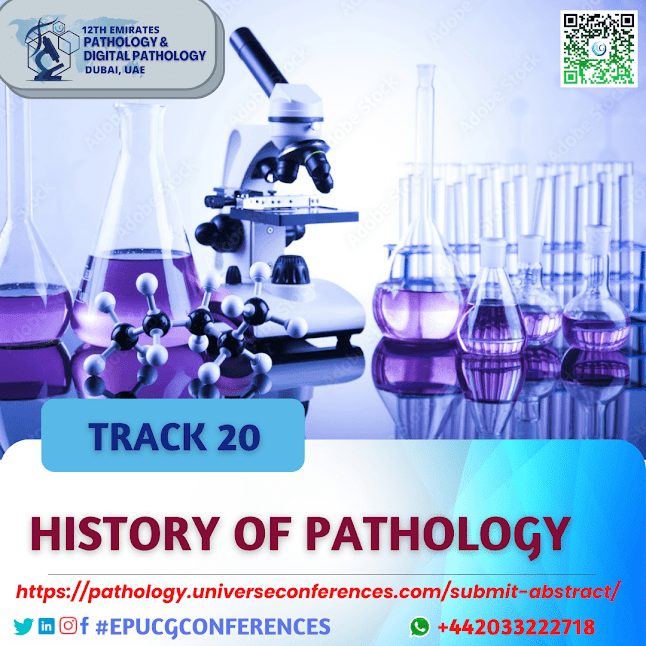What is Digital Pathology? Gains, Trends in the Future, and More
What is Digital Pathology? Gains, Trends in the Future, and More
Digital Pathology: What is it? Benefits, more
Acquisition, management, dissemination, and interpretation of pathology data, including data and slides, are all included in digital pathology. Glass slides are scanned using a scanning technology to produce digital slides, which are high-resolution digital images that may be viewed on a computer or mobile device.
Digital pathology has a more than 100-year history, starting with the invention of specialised tools to record pictures from a microscope onto photographic plates. Telepathology, or the transmission of microscope images between distant places, has been an idea for close to 50 years. However, it has only been in the last ten years that pathology has really started to transition from an analogue to an electronic setting.
Call for Abstracts! Abstract submission for EPUCG2022 in Dubai during December 21–24, 2022 is still open! Please use EPUCG Conference as your premier platform to present Pathology & Digital Pathology health research.

Submit now: https://pathology.universeconferences.com/submit-abstract/
Digital pathology enables pathologists to engage, analyse, and collaborate fast and remotely, with openness and consistency, hence increasing productivity. Future advancements in digital pathology may include enhanced translational research, computer-assisted diagnosis (CAD), and personalised treatment.
What Benefits Does Digital Pathology Offer?
Glass slides are here to stay, and for good cause. Pathology begins with tissue collection. Glass slides are required, even if they are afterwards scanned digitally. However, modern pathology extends beyond tissue and images. It is all about enhancing quality, efficiency, and more.
What are the trends of the future for Digital Pathology and I.H.C.?
Large biopharmaceutical companies and leading clinical research organisations (CROs) use digital pathology to streamline drug development procedures in discovery, pre-clinical, and clinical trials.
The possible future use of digital pathology for quantitative analysis of new companion diagnostics and novel theranostics presents a unique opportunity. With the advent of assays that are difficult to discern with the human eye, such as multiplex or markers that exhibit diffuse staining characteristics across multiple cellular compartments, of which, for example, only one may be clinically relevant, this opportunity may become especially significant.
The increasing complexity of such assays is driving the development of digital pathology solutions with advanced high-throughput image capture (brightfield, fluorescent, or multispectral) coupled with pattern recognition to morphologically identify relevant tissue types and individual cellular compartments, followed by the capacity to quantify (IHC) staining intensity.
Mark your calendar! Abstract submission and Mid-registration for EPUCG2022 in Dubai is still open! Please use EPUCG Conference as your premier platform to present Pathology & Digital Pathology health research.

Education Has Already Been Revolutionized by Digital Pathology.
The education industry was one of the earliest users of digital pathology, using it across the entire spectrum of histopathological learning, from undergraduate and postgraduate education to continuing professional development (CPD) and external quality assurance (EQA).
Traditional education utilising light microscopes and glass slides presents numerous obstacles, such as access to slides and fluctuating course content, which can be circumvented by employing digital pathology. These consist of:
Standardization of course material: With digital pathology, each student sees the exact same content, as opposed to similar slides cut from the same tissue block, which may or may not exhibit identical morphological and biomarker expression patterns. The standardisation of material ensures that all participants have the same educational opportunities and standards. In addition, digital pathology makes it easier to include rare instances in course material because only one digital copy of the slide is necessary, as opposed to several glass slides for a typical class size.
Join the 12th Emirates Pathology & Digital Pathology Conference in Dubai, UAE during December 21–24, 2022! A Closer Look at pathology & Digital Pathology will give in-depth knowledge on developing areas inside the field.
Register here: https://pathology.universeconferences.com/registration
Digital pathology enables increased access to tissue and slide-based material outside of regular laboratory and tutorial hours. Users can access their digital course content through the internet using a regular web browser on a desktop computer, tablet, or smartphone, allowing them to watch slides at any time and from any location. The use of digital pathology to support CPD and EQA schemes reduces circulation turnaround time and costs, as slides no longer need to be physically delivered from one location to the next, but may instead be shared efficiently with several sites concurrently.
Reach out to us:
Mail: pathology@universeconferences.com | info@utilitarianconferences.com
What Sapp: +442033222718
Call: +12076890407
Reference Pathology & Digital Pathology UCGconferences press releases and blogs
https://kikoxp.com/posts/16860
https://emiratespathologyucgconferences.blogspot.com/2022/10/submit-your-poster-for-emirates.html
https://wordpress.com/post/pathologyconferences845583273.wordpress.com/26



Comments
Post a Comment